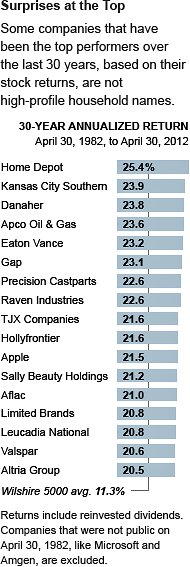
Losing their shares: fretful investors at a US brokerage in the 1960s.
| Investor Sentiment for Jun 6, 2012 |
|
| Bullish |
27.5% down 0.6 |
| Neutral |
26.8% down 3.2 |
|
|
| Bearish |
45.8% up 3.7 |
|
|
|
Note: Numbers may not add up to 100% because of rounding.
Change from last week:
Bullish: -0.6
Neutral: -3.2
Bearish: +3.7
Long-Term Average:
Bullish: 39%
Neutral: 31%
Bearish: 30% |
Today’s investors, too, are worried about when equities will bounce back.
Nikhil Srinivasan, the man who decides where one of the world’s biggest insurance funds places its assets, wants to know why he should invest in stocks. “We are delivering what policyholders want,” says Allianz Investment Management’s chief investment officer, speaking from his Munich base. “So there is no need to get aggressive about equities.”
Allianz, with a total of about €1.7tn under management, has only 6 per cent of its insurance portfolio in equities, while 90 per cent is in bonds. A decade ago, 20 per cent was in equities. It is far from alone: institutional investors, from pension funds to mutual funds sold directly to the public, have slashed holdings in the past decade. Stocks have not been so far out of favour for half a century. Many declare the “cult of the equity” dead.
The consequences are already being felt. Even the mighty Facebook is finding it hard to raise equity capital. With equity financing expensive, many companies are opting to raise debt instead, or to retire equity. As equity markets shrink, so does the sway of the owners of that equity, reducing shareholder control over companies – and challenging accepted concepts of corporate ownership.
Further, with equity returns virtually flat for more than a decade, the incentive for investors to take risks by funding smaller, more entrepreneurial companies has declined – eroding a process that has traditionally given managers the flexibility they need to grow. Capitalism with less equity finance would follow a much more conservative model.
“Ultimately what is going on is that fundamental tenets of capitalist society are being questioned,” says Andreas Utermann, chief investment officer of the Allianz division that manages €300bn in assets for external clients.
He forecasts that this will lead to a big transfer from savers to “the profligate and irresponsible” as the benefits of long-term saving are eroded. “The risk is that there will be a backlash by savers. The [impact will be felt] societally, politically, at a regional level and globally. We are still at the beginning of the whole process.”
Compared with bonds, stocks have not looked so cheap for half a century. During this period, the dividend yield – the amount paid out in dividends per share divided by the share price, a key measure of value – has been lower than the yield paid by bonds (which moves in the opposite direction to prices). In other words, investors were happy to take a lower interest rate from stocks than from bonds, despite their greater volatility, reflecting their confidence that returns from stocks would be higher in the long run.
But now investors want a higher yield from equities. According to Robert Shiller of Yale University, the dividend yield on US stocks is today 1.97 per cent – above the 1.72 per cent yield on 10-year US Treasury bonds.
Some hope that the cycle is about to turn and that the preconditions for a new cult of the equity will emerge even if it takes time. Few people doubt, however, that the old cult of the equity – which steered long-term savers into loading their portfolios with shares – has died.
This is stunning in light of overwhelming evidence that, in the long run, equities outperform. From 1900 to 2010, they beat inflation by 6.3 per cent a year in the US, according to a widely used benchmark maintained by London Business School, compared with only 1.8 per cent for bonds. In the US and the UK, public pension funds had allocations to equities as high as 70 per cent only 10 years ago. They are now down to 40 per cent in the UK, and 52 per cent in the US
At least two critical factors have combined. First came two stock market crashes since 2000, which shook faith in equities. Second, institutions have faced growing regulatory and business pressure to withdraw from stocks.
Indeed, equities have not been so cheap relative to bonds since 1956, which turned out to be one of the best moments in history to have bought stocks. George Ross Goobey, the British fund manager who ran Imperial Tobacco’s pension fund, had announced to great scepticism that he was shifting his entire portfolio into equities, sparking the cult of the equity because dividend yields exceeded bond yields.
Some see similar reasons for long-term optimism today – at least once heavily indebted households and governments complete the process of deleveraging. Amin Rajan of fund management consultancy Create Research says: “Equities are now undervalued by any measure. There’s a big wad of money sitting on the sideline waiting for a green light on the debt front. We may see the mother of all rallies at the first hint of a credible breakthrough.”
This year Goldman Sachs published a widely read report arguing that: “Given current valuations, we think it’s time to say a ‘long good bye’ to bonds, and embrace the ‘long good buy’ for equities as we expect them to embark on an upward trend over the next few years.”
However, this argument is more about bonds than stocks. With the recent crashes preceded by great bull markets, stock performance in the past 30 years has not been historically unusual. But yields on US Treasury bonds peaked in 1981 and global sovereign debt prices have risen steadily ever since. Buoyed initially by the US Federal Reserve’s success in bringing inflation (the enemy of bondholders) under control, and more recently by their “haven” status as investors sought to protect themselves against risks elsewhere, government bonds are now more expensive than at any time in history.
The trend cannot continue much longer without yields on bonds turning negative – meaning investors would pay for the privilege of lending to the government.
Ian Harnett of Absolute Strategy Research in London says money could start flowing back into equities once bond yields start to revert to historically normal levels, which will mean investors sell bonds and look for a new use for their cash. But like others, he is reluctant to say the moment has arrived, as central banks and governments are still heavily pushing investors towards bonds. “We are still in politicised markets. And that means you’re gambling, because you don’t know what politicians will do next.”
Meanwhile, fund managers emphasise the increasing regulatory incentives to buy bonds, a phenomenon now known as “financial repression”. “Governments are trying to deleverage by stealth and encourage banks to own as much as they can of sovereign debt,” says Mr Utermann of Allianz: “With all the regulators are throwing at them, it has become more difficult to own risk assets.”
Indeed, in the decades around the bursting of the technology bubble in 2000 that first punctured confidence in equities, governments have changed tax treatments on dividends; insisted companies and banks value assets as they are traded in the markets rather than on the basis of models and assumptions; altered accounting rules on how companies value pension promises to employees; and prodded pension managers to buy bonds by forcing them to match their assets to future liabilities.
These developments have “generated a regulatory regime for pension funds and insurers that is heavily pro-cyclical”, says Keith Skeoch, chief executive of Standard Life Investments, one of the UK’s biggest fund managers, which controls assets of about £200bn. “Even as bond yields fall and prices rise, and equity prices fall,” he says, “the regime is forcing institutions to hold risk-free assets”.
The pressure to cut equity exposures is being felt across the savings industry. Alasdair MacDonald of Towers Watson, one of the world’s biggest actuarial firms, points out that the UK’s savings and retirement funds that use the traditional “with-profits” model, where a bonus for savers is declared each year, are also withdrawing from equities. This is despite the fact they are more risk-tolerant than insurance funds, are not being forced to “de-risk” and have less onerous solvency requirements.
And if equities were to bounce and bonds fall, such funds would be more likely to sell more equities rather than stock up. Mr MacDonald forecasts that equity holdings could halve again in the next two decades.
Meanwhile, company and occupational pension funds are being pushed out of equities. Traditional defined-benefit or “final salary” pension funds in the developed world are relinquishing equities under pressure from actuaries as schemes near maturity. The steady shift to defined-contribution pensions, which do not guarantee a set income and where individual savers must make investment decisions, has also led to lower equity weightings, as private investors tend to be more conservative.
Retail investors’ conservatism has also driven money out of collective investment funds. In the US, inflows to bond funds have exceeded equity inflows every year since 2007, with outright net redemptions from equity funds in each of the past five years.
For Mr MacDonald, the issue is whether there are sufficient bonds to satisfy all the demand that has been created for them. “Does it all add up? There are not enough bonds in the world,” he says. If so, exceptionally low bond yields could continue. That would delay the hoped-for big switch back into equities.
“Overall, the past 10 years have been horrid. The question is why equity markets have not been down more,” says Mr Utermann.
The answer is that reduced demand for equity has been answered by reduced supply. Companies are buying back their own stock, which often makes sense if valuations are too cheap, while investors force them into paying higher dividends. With interest rates low, acquisitions tend to be financed by debt, not equity, leading to a fall in the overall pool of equity.
According to Rob Buckland of Citigroup, who christened this phenomenon “de-equitisation” back in 2005, net equity issuance in the US was negative last year, as it was in Europe between 2003 and 2007. Across the developed world, equity issuance is far lower than in the 1990s, and has made only a feeble recovery since the credit crisis.
For Mr Buckland, this is “the logical response to the collapse in investor appetite for equities evident in the past decade”. But it also implies that capitalism as currently conceived, where corporate managers are responsible to their owners through the stock market, is under threat.
With fund managers under pressure to buy bonds – and companies content to adapt to this rather than create the conditions where equities might look exciting again – it is easy to see why they believe the next cult of the equity is still up to a decade away. For Mr Utermann, there is “no natural flow into equities” for the next five to 10 years. “The rules of the game have changed”.
Note the proverbial, “This time is different.” “No it ain’t.” –Chicago Slim.
“The four most dangerous words in investing are ‘This time it’s different.’” –Sir John Templeton











